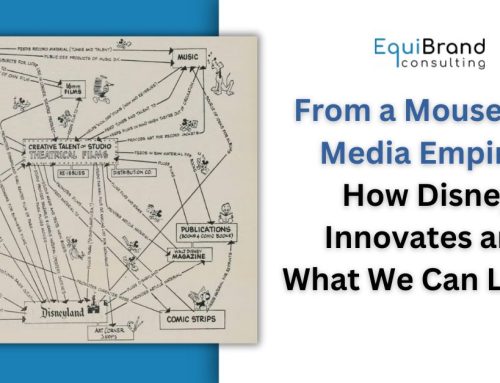“Skate to where the puck is going, not where it has been.”
You’ve probably heard those famous words from hockey great Wayne Gretzky.
Sure, it may be a corporate cliché, but it’s particularly relevant in today’s complex business world because it’s a reminder to be forward-thinking in uncovering opportunities.
In other words: Don’t look back – you’re not going that way!
No one can really predict the future, but with the right techniques, you can gather insight to uncover potential new opportunities.
Replacing the “rear view mirror” with a “windshield” view requires projective techniques to envision an optimal future state. Consider the useful approach presented here.
Close the Gaps in Your Marketing Strategy With this Technique
One of our favorite strategies is a projective technique we call “The Wall Street Journal Exercise” to get clients to begin with the end in sight.
The idea is to force team members to envision the future state very early in a project. Here are some simple prompts:
- First, pick a date at a relevant point in time, say five years from today. Write the date at the top of a blank sheet of paper.
- Next, spend a few minutes thinking about where you’d like the organization to be five years from now. The future state should be aspirational, but also achievable – within the realm of possibility. Avoid blue-sky brainstorming and focus instead on a plausible stretch goal.
- Now, write the headline of a WSJ article capturing the essence of the future state. Like any good headline, it should encapsulate the main idea and leave the reader wanting to know more.
- Finally, write a paragraph that describes the situation from two perspectives. Where are you today (the end state)? And how did you get there (from the current state)? Fill in the how and the five W’s: who, what, when, where, and why.
Read the article aloud. What’s the headline? What happened? Why was it a success?
Why End-in-Sight Concepting is Effective
End-in-sight concepting is a great way to check internal alignment and identify strategy gaps to fill. Concepts can take a variety of forms, including verbal and visual descriptions to bring the idea to life. The key is to make them tangible and seek feedback to improve the ideas.
At Amazon, meetings to present ideas don’t start with PowerPoint slides, but with narratively structured memos. Jeff Bezos asks team members to submit six-page memos, which are then read—in silence—by meeting attendees.
By having to write it all down—as opposed to dashing off quick bullet points or preparing run-of-the-mill PowerPoint slides—authors are forced to think through tough questions and formulate clear, persuasive replies, all while reasoning through the structure and logic.
Forward-thinking is an important component of upstream marketing. We invite you to explore this key topic more deeply – download the second chapter of our best-seller “Upstream Marketing.” Access it free here.




















Follow EquiBrand